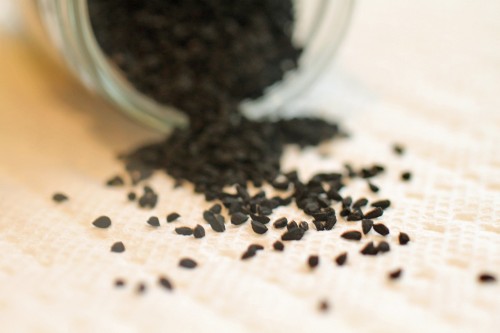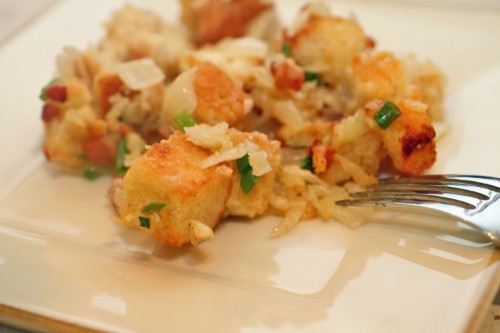Scones with Sorrel Flower Jelly
When someone says “sorrel” these days, what typically springs to mind is the green leafy vegetable, or herb to some, that has trendily showed up on menus in the past few years. Though it might be delicious in jelly form, that is definitely not the sorrel in this recipe…I’m actually referring to the sorrel flower I mentioned in a previous post that’s used to make a popular West Indian drink.
The first time I tried sorrel was with my husband at the Trinidadian-Chinese spot in Brooklyn I wrote about a few months back. It’s a blood-red drink – tart, sweet, floral with an underlying taste of cloves. Unusually delicious. The sorrel flower is actually hibiscus, so it’s not a far stretch from your basic hibiscus tea. And similar to tea, sorrel is made from steeping the flower with sugar and spices. A similar drink is also widely consumed in parts of Africa where it’s known as roselle orbissap rouge in Senegal or even karkadeh in Egypt. Jamaicans use ginger to flavor the sorrel, but you know I had to stay true to the Trinidadians, so I stuck with their tradition of cinnamon and clove.
I actually trekked over to the (deep) BK to a small West Indian market to find dried sorrel petals for this recipe, which was totally unnecessary I found out during my last trip to some of my favorite ethnic grocers in the city. You can typically find the dried form in health food stores and in various ethnic markets.
In any case, a jelly is a mildly unusual but interesting use of sorrel and, it turns out, delicious. How cool is that – to make your own homemade and seasonal jellies and jams. This one, I like to layer with a little mascarpone or Devonshire cream on the scone to balance out the sweetness. The scone is buttery and delectable but plain Jane as far as scones go, a great basic scone recipe to which you can add any variation of ingredients. That was purposeful – I really wanted the flavor of sorrel to shine though. Enjoy.
Ingredients
Yields 6 ½ cups jelly and approximately a dozen scones (depending on size)
Sorrel Jelly:
4 ½ cups water
1 ½ cups dried sorrel flower
1 cinnamon stick
6 whole cloves
6 cups granulated sugar
1 3 oz pouch liquid pectin (I used Certo brand)
Basic Scone:
2 cups all-purpose flour
1 tbsp baking powder
1/3 cup granulated sugar
1 tsp salt
1 stick butter, cold, cut into cubes
2 eggs, cold
½ cup heavy cream, cold
Procedure
For the jelly, bring water to a boil with the cinnamon stick and cloves. Add sorrel and boil for 2 minutes. Remove from the heat and let sit overnight. In certain places, sorrel may even be allowed to sit for several days to achieve the desired flavor.
Strain sorrel mixture into a saucepan and bring to a boil. Add sugar, stir to dissolve, and bring back up to a boil. Add liquid pectin and boil for 1 minute . Be very careful at this point – it easily boils over. Remove from the heat and immediately pour into sterilized jars. Jars, prior to being filled, should be heated in a pot in simmering water and kept hot until filled with the jelly.
Although the sugar helps preserve the jelly, processing the jars in a boiling water bath after filling with jelly will help seal the jars for longer preservation. Place jars back into the water pot and make sure that the water covers the jars by 1 to 2 inches. Boil for 5 minutes, remove, and cool. Unopened, the jellies will be good for about 1 year. Once opened, the shelf life is about 3 weeks.
For the scones, preheat the oven to 375? F. Combine all-purpose flour, baking powder, sugar and salt in a stand mixer. Add diced, cold butter and mix on low until the texture resembles sandy peas. It’s important that the ingredients stay cold as this creates a flakier texture for the resulting scone. Combine eggs and cold, heavy cream and pour into the mixer bowl slowly with the mixer on low. Be careful not to overmix – you just want the dough to come together. Overmixing will also result in a tougher, less flakier scone.
Roll out dough on a floured surface with a floured rolling pin until about ½ “ thick and cut out with whatever cutter shape/size you like. I say approximately a dozen scones because it varies with how you choose to size your scones. You can also brush with an egg wash at this point if you like to make the tops deeper brown and shiny. Bake for about 15-18 minutes until the scones are uniformly golden brown. Cool on a rack for another 20 minutes or so.
Serve scones warm with a bit of the jelly and some cream.





















